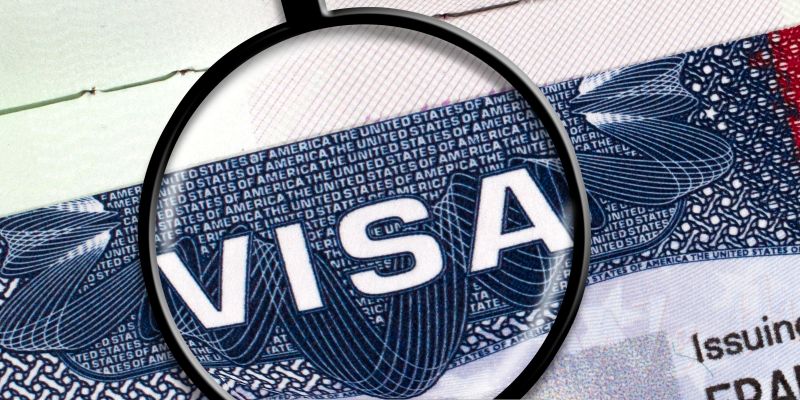Layover visas are a crucial aspect of international travel, particularly for those who find themselves with extended stopovers in foreign countries. These visas allow travelers to leave the airport and explore the layover destination, rather than being confined to the terminal. The concept of a layover visa is particularly appealing for those who wish to make the most of their travel experience, turning what could be a tedious wait into an opportunity for adventure.
Understanding the nuances of layover visas can significantly enhance a traveler’s journey, providing them with the chance to immerse themselves in a new culture, sample local cuisine, and visit iconic landmarks. The necessity of a layover visa often depends on the traveler’s nationality, the country of the layover, and the duration of the stopover. Some countries have more lenient policies, allowing travelers to enter without a visa for short periods, while others may require a formal application process even for brief stays.
This complexity can lead to confusion among travelers, making it essential to research and understand the specific requirements associated with layover visas before embarking on an international trip. By doing so, travelers can avoid potential pitfalls and ensure a smoother journey.
Key Takeaways
- Layover visas allow travelers to leave the airport and explore the city during a long layover
- Layover visa requirements and application processes vary by country
- Some countries offer free layover visas while others require a fee
- Layover visas typically have a duration ranging from a few hours to a few days
- Travelers should research layover visa restrictions and benefits before planning their trip
How Layover Visas Differ by Country
The regulations surrounding layover visas can vary significantly from one country to another, reflecting each nation’s immigration policies and security concerns. For instance, countries like Singapore and South Korea are known for their welcoming approach to layover travelers, often allowing them to explore the city without a visa for a limited time. In contrast, nations such as Russia and India may impose stricter requirements, necessitating a visa even for short layovers.
This disparity underscores the importance of understanding the specific rules that apply to each destination. Moreover, some countries have established special programs aimed at encouraging layover tourism. For example, certain Middle Eastern nations offer transit visas that not only permit travelers to leave the airport but also provide incentives such as discounted hotel stays or guided tours.
These initiatives are designed to boost tourism and showcase the country’s attractions to international visitors. As such, travelers should take the time to investigate not only the visa requirements but also any promotional programs that may enhance their layover experience.
Layover Visa Requirements
The requirements for obtaining a layover visa can be quite diverse, depending on various factors such as nationality, destination, and duration of stay. Generally, travelers must provide valid identification, such as a passport with at least six months of validity remaining, along with proof of onward travel. This could include a confirmed flight itinerary that demonstrates the traveler’s intention to leave the country after their layover.
Additionally, some countries may require travelers to show evidence of sufficient funds to cover their expenses during their stay. In some cases, travelers may also need to submit additional documentation, such as hotel reservations or travel insurance. These requirements can vary widely; therefore, it is advisable for travelers to consult the official immigration website of their layover destination or contact their embassy for the most accurate and up-to-date information. By being well-prepared and understanding what is needed for a layover visa, travelers can streamline their experience and avoid unnecessary delays at immigration checkpoints.
Layover Visa Application Process
| Country | Visa Type | Processing Time | Validity |
|---|---|---|---|
| United States | Layover Visa | 2-3 weeks | Up to 24 hours |
| United Kingdom | Transit Visa | 5-10 days | Up to 48 hours |
| Canada | Transit Visa | 4-7 days | Up to 48 hours |
The application process for a layover visa can differ significantly based on the country in question. In many cases, travelers can apply for a layover visa online through an official government portal, which simplifies the process considerably. This online application typically requires filling out personal information, uploading necessary documents, and paying any applicable fees.
Once submitted, applicants may receive their visa approval via email or through an online account within a few days. However, some countries may require travelers to apply in person at an embassy or consulate. This process can be more time-consuming and may involve scheduling an appointment, attending an interview, and providing biometric data such as fingerprints.
Travelers should be aware of these differences and plan accordingly, allowing ample time for processing before their departure date. Understanding the application process is essential for ensuring that all necessary steps are completed in a timely manner.
Layover Visa Fees
Layover visa fees can vary widely depending on the country and the specific type of visa being applied for. Some nations offer free transit visas for short layovers, while others may charge a nominal fee or a more substantial amount for longer stays. It is important for travelers to factor these costs into their overall travel budget when planning their trip.
Additionally, some countries may have different fee structures based on nationality; thus, it is wise to check if there are any exemptions or discounts available. Travelers should also be aware that there may be additional costs associated with obtaining a layover visa. For instance, if applying in person at an embassy or consulate, there may be fees for document processing or courier services if documents need to be sent back and forth.
Understanding these potential expenses can help travelers avoid surprises and ensure they have sufficient funds available for their journey.
Layover Visa Duration
The duration of stay permitted under a layover visa can vary significantly from one country to another. Some countries allow travelers to remain for just a few hours, while others may permit stays of several days. For example, many European nations offer transit visas that allow travelers to stay for up to 72 hours without entering the full visa application process.
Conversely, countries like Australia may have stricter regulations that limit layover durations even further. Travelers should pay close attention to these time limits when planning their itineraries. Exceeding the allowed duration can lead to serious consequences, including fines or bans from re-entering the country in the future.
Therefore, it is crucial for travelers to familiarize themselves with the specific duration allowed under their layover visa and plan their activities accordingly to ensure compliance with local laws.
Layover Visa Extension Options
In certain situations, travelers may find themselves needing to extend their layover visa due to unforeseen circumstances such as flight cancellations or personal emergencies. The options available for extending a layover visa can vary widely by country. Some nations may allow extensions through a simple application process at local immigration offices, while others may have strict policies that do not permit extensions under any circumstances.
Travelers should be proactive in understanding the extension policies of their layover destination before arriving. In some cases, it may be possible to apply for an extension online or through an official government portal. However, it is essential to act quickly and ensure that any extension requests are submitted well before the original visa expires to avoid complications.
Layover Visa Restrictions
While layover visas offer travelers the opportunity to explore new destinations during their stopovers, they often come with specific restrictions that must be adhered to. Common limitations include prohibitions on engaging in paid work or staying beyond the permitted duration without proper authorization. Additionally, some countries may restrict access to certain areas or activities that are reserved for tourists with full visas.
Travelers should familiarize themselves with these restrictions to avoid inadvertently violating local laws. Ignorance of these rules is not typically accepted as an excuse by immigration authorities. By understanding what is permissible under a layover visa, travelers can enjoy their time without fear of legal repercussions.
Layover Visa Benefits
The benefits of obtaining a layover visa are numerous and can greatly enhance a traveler’s experience. One of the most significant advantages is the opportunity to explore new cultures and environments during what would otherwise be an idle wait at an airport. This chance to engage with local customs and cuisine can transform a long journey into an enriching experience.
Additionally, many countries actively promote layover tourism by offering special packages or incentives for travelers with layover visas. These can include discounted tours, transportation options, or even complimentary meals at local restaurants. Such initiatives not only benefit travelers but also contribute positively to local economies by encouraging tourism and cultural exchange.
Layover Visa Tips and Tricks
To make the most of a layover visa experience, travelers should consider several practical tips and tricks. First and foremost, thorough research is essential; understanding local customs, transportation options, and must-see attractions can help maximize time spent outside the airport. Creating a flexible itinerary that allows for spontaneity while ensuring key sites are visited can lead to a more fulfilling experience.
Another useful tip is to connect with fellow travelers or locals through social media platforms or travel forums before arriving at the destination. This can provide valuable insights into hidden gems or popular spots that might not be included in traditional travel guides. Additionally, keeping an eye on local events or festivals during the layover period can add an extra layer of excitement and cultural immersion.
Making the Most of Your Layover Visa
In conclusion, understanding layover visas is essential for any traveler looking to enhance their international journey. By familiarizing themselves with the requirements, application processes, fees, and restrictions associated with these visas, travelers can turn potentially tedious stopovers into memorable experiences filled with exploration and adventure. Each country offers unique opportunities for discovery during layovers; thus, taking advantage of these chances can lead to unexpected delights.
Ultimately, being well-prepared allows travelers not only to navigate the complexities of layover visas but also to fully embrace the rich tapestry of cultures that await them during their travels. With careful planning and an adventurous spirit, they can transform their layovers into unforgettable chapters in their travel stories.
FAQs
What is a layover visa?
A layover visa, also known as a transit visa, allows travelers to stay in a country for a short period of time while they are en route to their final destination.
Do all countries require a layover visa for a connecting flight?
No, not all countries require a layover visa for a connecting flight. The need for a layover visa depends on the traveler’s nationality, the country they are transiting through, and the length of their layover.
How long can I stay in a country with a layover visa?
The length of stay permitted with a layover visa varies by country. It can range from a few hours to a few days, depending on the specific visa rules of the country.
Do I need to apply for a layover visa in advance?
In some cases, travelers may need to apply for a layover visa in advance, while in other cases, they may be able to obtain a visa upon arrival at the airport. It is important to check the visa requirements of the specific country you will be transiting through.
Are there any fees associated with obtaining a layover visa?
There may be fees associated with obtaining a layover visa, such as application fees or processing fees. The cost of the visa can vary by country.
Can I leave the airport during a layover with a layover visa?
In most cases, travelers with a layover visa are permitted to leave the airport and explore the city or country they are transiting through. However, it is important to check the specific visa rules and any restrictions that may apply.









